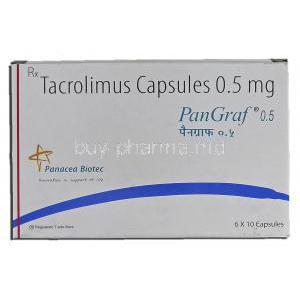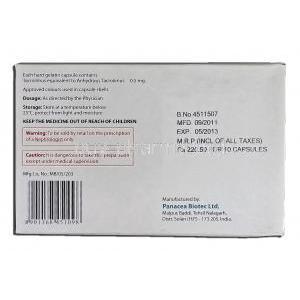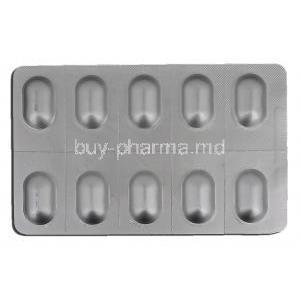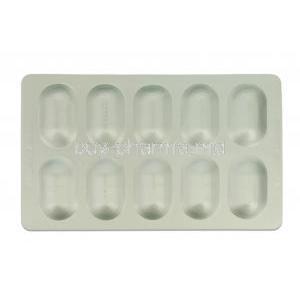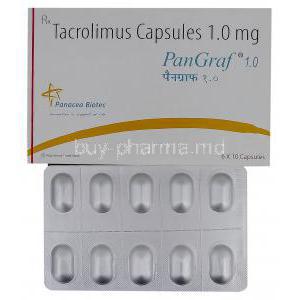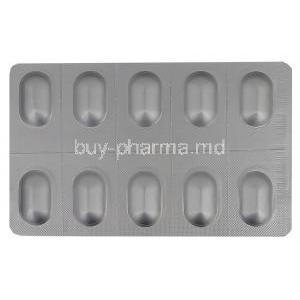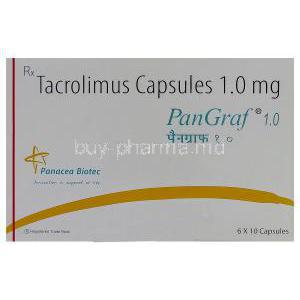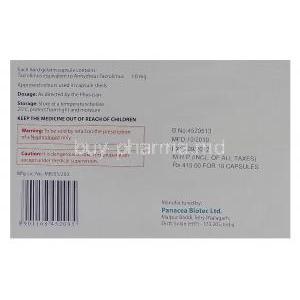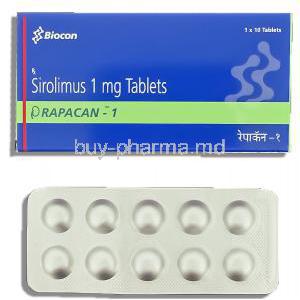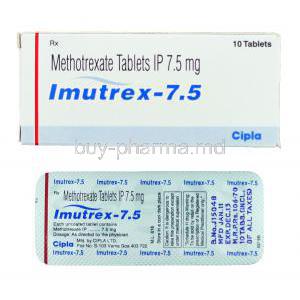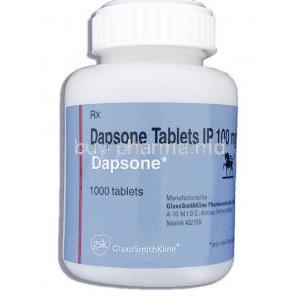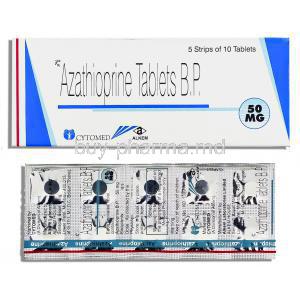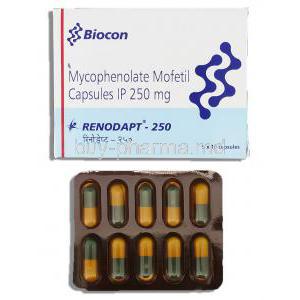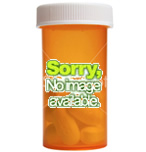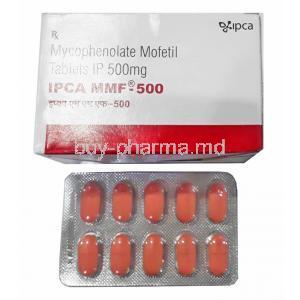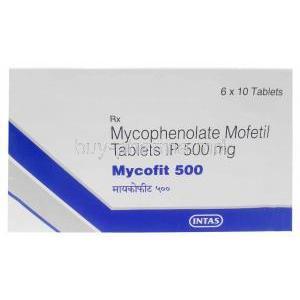Introduction
Overview of Pan Graf and Tacrolimus as Immunosuppressants
Pan Graf, containing the active agent tacrolimus, is a potent immunosuppressant widely utilized in clinical medicine. Its principal role lies in safeguarding transplanted organs from immunological assault, thereby ensuring graft survival. It is highly valued for its capacity to diminish immune hyper-reactivity without completely eradicating defensive immunity.
Historical Background and Clinical Development
Tacrolimus was first isolated in the late 20th century from Streptomyces tsukubaensis, a soil-borne bacterium. Originally investigated in Japan, it quickly garnered global attention for its superior immunosuppressive efficacy compared to earlier agents. Over time, rigorous clinical trials validated its safety and effectiveness in transplantation medicine, paving the way for regulatory approvals worldwide.
Therapeutic Class and Relevance in Transplant Medicine
Belonging to the calcineurin inhibitor class, tacrolimus plays a pivotal role in transplant pharmacotherapy. It is prescribed to reduce the risk of acute and chronic rejection episodes in organ recipients. The medicine remains indispensable in modern transplant protocols, often forming part of multidrug regimens tailored for long-term graft preservation.
Key Differences Between Tacrolimus and Other Immunosuppressants
- Tacrolimus exhibits greater potency than cyclosporine at lower doses.
- It is associated with fewer cosmetic side effects such as gingival hyperplasia and hirsutism.
- However, tacrolimus is more frequently linked to neurotoxicity and glucose intolerance.
Composition of Pan Graf
Active Ingredient: Tacrolimus
The therapeutic core of Pan Graf is tacrolimus, a macrolide lactone with profound immunomodulatory properties.
Available Formulations
Pan Graf is dispensed in various formulations, including oral capsules for systemic use, ointments for topical dermatological therapy, and intravenous preparations for acute medical management.
Strengths and Dosage Forms
Capsules are commonly available in strengths such as 0.5 mg, 1 mg, and 5 mg, allowing individualized titration. Ointments are typically provided in 0.03% and 0.1% concentrations.
Inactive Ingredients and Excipients
Excipients may include lactose monohydrate, hydroxypropyl cellulose, and other stabilizers to ensure bioavailability and stability of the formulation.
How Pan Graf (Tacrolimus) Works
Mechanism of Action: Calcineurin Inhibition
Tacrolimus binds to the intracellular protein FKBP-12, forming a complex that inhibits calcineurin. This blockade prevents dephosphorylation of nuclear factor of activated T-cells (NF-AT), halting the transcription of interleukin-2 and other cytokines.
Effects on T-Lymphocytes
By suppressing interleukin-2 synthesis, tacrolimus significantly reduces the proliferation and activation of T-lymphocytes, the main drivers of graft rejection.
Impact on Cytokine Production
The drug modulates the immune cascade by downregulating pro-inflammatory cytokines, curtailing cellular and humoral immune responses.
Pharmacokinetics and Metabolism
Absorption of tacrolimus is variable and influenced by food intake. It undergoes extensive metabolism via the CYP3A4 enzyme system, necessitating careful drug interaction monitoring. Bioavailability ranges from 20% to 25%, and therapeutic levels are tightly controlled.
Medical Uses of Pan Graf
Approved Clinical Uses
- Prevention of organ rejection in kidney transplantation.
- Prevention of liver transplant rejection.
- Prevention of rejection in heart transplant patients.
- Treatment of steroid-resistant episodes of transplant rejection.
Dermatological Uses
Topical tacrolimus ointment is prescribed for atopic dermatitis, particularly in patients unresponsive to corticosteroids. It is also valuable in managing chronic eczema with minimal systemic absorption.
Ophthalmic Uses
In ophthalmology, tacrolimus has been applied off-label for vernal keratoconjunctivitis and severe dry eye disease, offering relief where conventional therapies fail.
Off-Label Uses of Pan Graf (Tacrolimus)
- Adjunct therapy in ulcerative colitis and Crohn’s disease.
- Management of myasthenia gravis resistant to standard treatment.
- Cutaneous disorders such as psoriasis and vitiligo.
- Control of lupus nephritis and systemic autoimmune conditions.
- Therapy in refractory rheumatoid arthritis and systemic sclerosis.
Dosage and Administration
General Dosing Guidelines
Dosing is individualized based on organ type, concomitant medications, and patient-specific factors. Therapeutic drug monitoring is mandatory to maintain optimal plasma concentrations.
Oral Dosing
Capsules are administered twice daily, ideally at consistent times relative to meals. Food may reduce absorption, particularly high-fat meals.
Topical Dosing
Ointment is applied in thin layers to affected skin areas twice daily. Continuous use beyond several weeks requires physician oversight.
Intravenous Dosing
Reserved for patients unable to take oral formulations, intravenous tacrolimus is infused under close supervision to prevent nephrotoxicity and systemic complications.
Therapeutic Drug Monitoring
Blood trough levels are measured frequently in early therapy and adjusted to maintain immunosuppressive efficacy while minimizing toxicity.
Adjustments in Renal or Hepatic Impairment
Dose reductions are frequently required due to altered metabolism and clearance in these populations.
Side Effects of Pan Graf
Common Side Effects
- Tremors, paresthesias, and neurological disturbances.
- Headaches, dizziness, and sleep disorders.
- Gastrointestinal upset: nausea, vomiting, diarrhea, abdominal discomfort.
- Hyperglycemia and increased risk of new-onset diabetes mellitus.
- Hypertension and renal function decline.
- Cutaneous reactions such as rash and pruritus.
Serious Side Effects
- Nephrotoxicity leading to acute or chronic renal failure.
- Hepatic dysfunction with enzyme elevation.
- Heightened infection risk due to immunosuppression.
- Increased incidence of skin cancers and lymphomas.
- Cardiac conduction abnormalities, including QT prolongation.
- Anaphylactic responses and hypersensitivity syndromes.
Drug Interactions with Pan Graf
- Strong CYP3A4 inhibitors (e.g., ketoconazole, erythromycin) raise tacrolimus levels dangerously.
- CYP3A4 inducers (rifampicin, carbamazepine) reduce therapeutic efficacy.
- Grapefruit juice amplifies systemic exposure and should be avoided.
- Concomitant use with cyclosporine may cause additive nephrotoxicity.
- NSAIDs and nephrotoxic drugs increase renal risk.
- Live vaccines may be less effective due to immune suppression.
Warnings and Important Precautions
- Pan Graf has a narrow therapeutic index; regular monitoring is mandatory.
- Patients are at risk for opportunistic viral, fungal, and bacterial infections.
- Long-term use may elevate malignancy risk, particularly of lymphoproliferative disorders and skin cancers.
- Excessive sun exposure should be avoided, with protective measures encouraged.
- Switching between different brands or formulations without medical guidance can cause subtherapeutic exposure or toxicity.
Contraindications
Known Hypersensitivity to Tacrolimus or Excipients
Pan Graf should not be administered to individuals with a documented hypersensitivity to tacrolimus or any of the inactive ingredients within the formulation. Allergic reactions can manifest as severe dermatological eruptions, anaphylaxis, or systemic hypersensitivity syndromes.
Concurrent Use with Cyclosporine in Systemic Formulations
Simultaneous systemic administration of tacrolimus and cyclosporine is contraindicated due to heightened nephrotoxic potential and overlapping mechanisms of action. Such combinations can precipitate acute renal failure and unpredictable pharmacokinetic interactions.
Severe Uncontrolled Infections
Immunosuppression induced by tacrolimus can exacerbate uncontrolled bacterial, viral, or fungal infections. Administration in these circumstances may worsen patient prognosis and lead to systemic complications such as sepsis.
Unmonitored Use in Patients with Malignancies
Patients with pre-existing malignancies require strict medical supervision. The risk of tumor progression or new malignancy development is elevated under immunosuppressive therapy. Unmonitored administration is therefore contraindicated.
Careful Administration and Patient Monitoring
Regular Monitoring of Tacrolimus Blood Levels
Due to its narrow therapeutic index, tacrolimus requires vigilant therapeutic drug monitoring. Subtherapeutic levels may precipitate graft rejection, while supratherapeutic levels can cause nephrotoxicity and neurotoxicity.
Monitoring of Renal and Hepatic Function
- Frequent assessment of serum creatinine and glomerular filtration rate is necessary.
- Liver enzyme panels should be measured regularly to detect hepatotoxicity.
Monitoring of Blood Pressure and Blood Sugar
Tacrolimus is associated with hypertension and post-transplant diabetes mellitus. Blood pressure and fasting glucose must be monitored consistently, with therapeutic interventions as required.
Considerations for Drug Switching and Brand Substitution
Switching between different tacrolimus brands or formulations without professional oversight can lead to fluctuating drug exposure. Even minor changes in bioavailability may compromise transplant outcomes.
Administration in Special Populations
Administration to Elderly Patients
Elderly patients are particularly susceptible to drug-induced renal impairment. Reduced clearance necessitates dose adjustments, and closer monitoring of renal biomarkers is essential to prevent cumulative toxicity.
Administration to Pregnant Women and Nursing Mothers
Data regarding tacrolimus use in pregnancy indicate potential teratogenicity and neonatal complications. It should only be prescribed if the potential maternal benefit outweighs fetal risk. Tacrolimus is excreted into breast milk, posing risks to nursing infants; breastfeeding is generally discouraged during therapy.
Administration to Children
Pediatric dosing is carefully calculated based on body weight and organ type. Although effective, long-term use raises concerns regarding growth retardation and developmental outcomes, necessitating longitudinal follow-up.
Overdosage of Pan Graf
Symptoms of Overdose
Excessive tacrolimus exposure may provoke tremors, seizures, renal toxicity, profound hypertension, or electrolyte disturbances.
Emergency Management and Supportive Therapy
There is no specific antidote for tacrolimus overdose. Management is supportive, emphasizing airway protection, seizure control, and renal function stabilization. Hemodialysis is generally ineffective due to high protein binding.
Use of Activated Charcoal in Oral Overdose Cases
If ingestion is recent, activated charcoal may reduce systemic absorption. Gastric lavage may be considered under controlled settings.
Storage and Handling Precautions
Recommended Storage Conditions
Capsules should be stored at controlled room temperature, shielded from excessive light, heat, and humidity. Ointments should be tightly sealed after each use to preserve stability.
Shelf Life and Expiration Guidelines
Products must not be used beyond their expiration date, as potency and safety cannot be assured. Shelf life varies depending on the formulation.
Handling Precautions for Healthcare Providers
Healthcare workers should handle tacrolimus with gloves to prevent accidental dermal exposure. Crushing or opening capsules is discouraged due to risk of inhalation or contamination.
Safe Disposal of Unused or Expired Medication
Unused or expired tacrolimus should be disposed of in accordance with pharmaceutical waste regulations. Patients should be instructed never to discard medication in household trash or wastewater systems.
Pan Graf, Tacrolimus FAQ
- What is pangraf used for?
- Is Pangraf 0.5 a prescription drug?
- What is the best way to use a pangraf?
- Can Pangraf 0.5 affect kidney function?
- Is Pangraf 1mg available as a generic?
- What are the side effects of pangraf?
- What is the point of a pangraf?
- Is Pangraf 0.5 the same as tacrolimus?
- What is the drug tacrolimus used for?
- What is the most common side effect of tacrolimus?
- Is tacrolimus good for skin?
- Can tacrolimus damage kidneys?
- How long is it safe to use tacrolimus?
- What to avoid while taking tacrolimus?
- How quickly does tacrolimus work?
- Is tacrolimus hard on your liver?
- Can tacrolimus darken skin?
- Can tacrolimus thicken skin?
- Can tacrolimus cause heart failure?
- What happens if you give too much tacrolimus?
- Is Pangraf 0.5 a prescription drug?
- Is Pangraf 0.5 the same as tacrolimus?
- How long is it safe to use tacrolimus?
- Can tacrolimus darken skin?
- Can tacrolimus thicken skin?
- Can Pangraf 0.5 affect kidney function?
- Is Pangraf 1mg available as a generic?
- Is Pangraf 0.5 the same as tacrolimus?
What is pangraf used for?
When taking Pangraf 1 Capsule with medications after a transplant surgery, like liver or kidney transplant, to avoid organ rejection by suppressing the body's response to the new organ, it is common practice in medicine, as it falls under the category of immunosuppressant drugs.
Is Pangraf 0.5 a prescription drug?
Yes
What is the best way to use a pangraf?
Remember to consume one Pangraf 1 Capsule either an hour before eating or 2 to 3 hours post a meal, based on your physician's recommendation.
Can Pangraf 0.5 affect kidney function?
It can trigger or exacerbate issues with diabetes and kidney function.
Is Pangraf 1mg available as a generic?
Yes
What are the side effects of pangraf?
- Insomnia
- Increased glusoce levels
- High Blood pressure
- Renal toxicity
- Neurotoxicity
- Diabetes
- Decreased appetite
- Electrolyte imbalance
- Fluid overload
What is the point of a pangraf?
Doctors prescribe this medication to avoid the body rejecting an organ, such as a kidney or liver, by mistake and attacking it as if it were foreign after a transplant surgery, for the kidney, liver, or heart.
Is Pangraf 0.5 the same as tacrolimus?
Yes
What is the drug tacrolimus used for?
Tacrolimus ointment helps alleviate eczema-related symptoms in individuals who use medications or those whose condition has not improved with other treatments, due to atopic dermatitis—an ailment characterized by dry and itchy skin, along with occasional red and scaly rashes.
What is the most common side effect of tacrolimus?
- Nausea
- Diarrhea
- Fever
- Fatigue
- Uncontrollable shaking
Is tacrolimus good for skin?
Tacrolimus assists in reducing these symptoms, which arise from reactions triggered by the body's immune system.
Can tacrolimus damage kidneys?
Yes
How long is it safe to use tacrolimus?
1 year
What to avoid while taking tacrolimus?
Limit your consumption of foods high in potassium, such as bananas and oranges, to avoid excessive intake of this mineral in your diet. Also, steer clear of grapefruits or any beverages containing grapefruit juice, as they can elevate your tacrolimus levels to dangerous heights.
How quickly does tacrolimus work?
12 weeks
Is tacrolimus hard on your liver?
No
Can tacrolimus darken skin?
Yes
Can tacrolimus thicken skin?
Yes
Can tacrolimus cause heart failure?
Rarely
What happens if you give too much tacrolimus?
The individual showed increases in markers of kidney function (blood urea nitrogen and creatinine), feelings of nausea, and mild shaking in the hands, along with levels of liver enzymes.
Is Pangraf 0.5 a prescription drug?
Yes
Is Pangraf 0.5 the same as tacrolimus?
Yes
How long is it safe to use tacrolimus?
1 year
Can tacrolimus darken skin?
Yes
Can tacrolimus thicken skin?
Yes
Can Pangraf 0.5 affect kidney function?
Excessive consumption of this substance may lead to the development or exacerbation of diabetes and kidney issues.
Is Pangraf 1mg available as a generic?
Yes
Is Pangraf 0.5 the same as tacrolimus?
Yes


